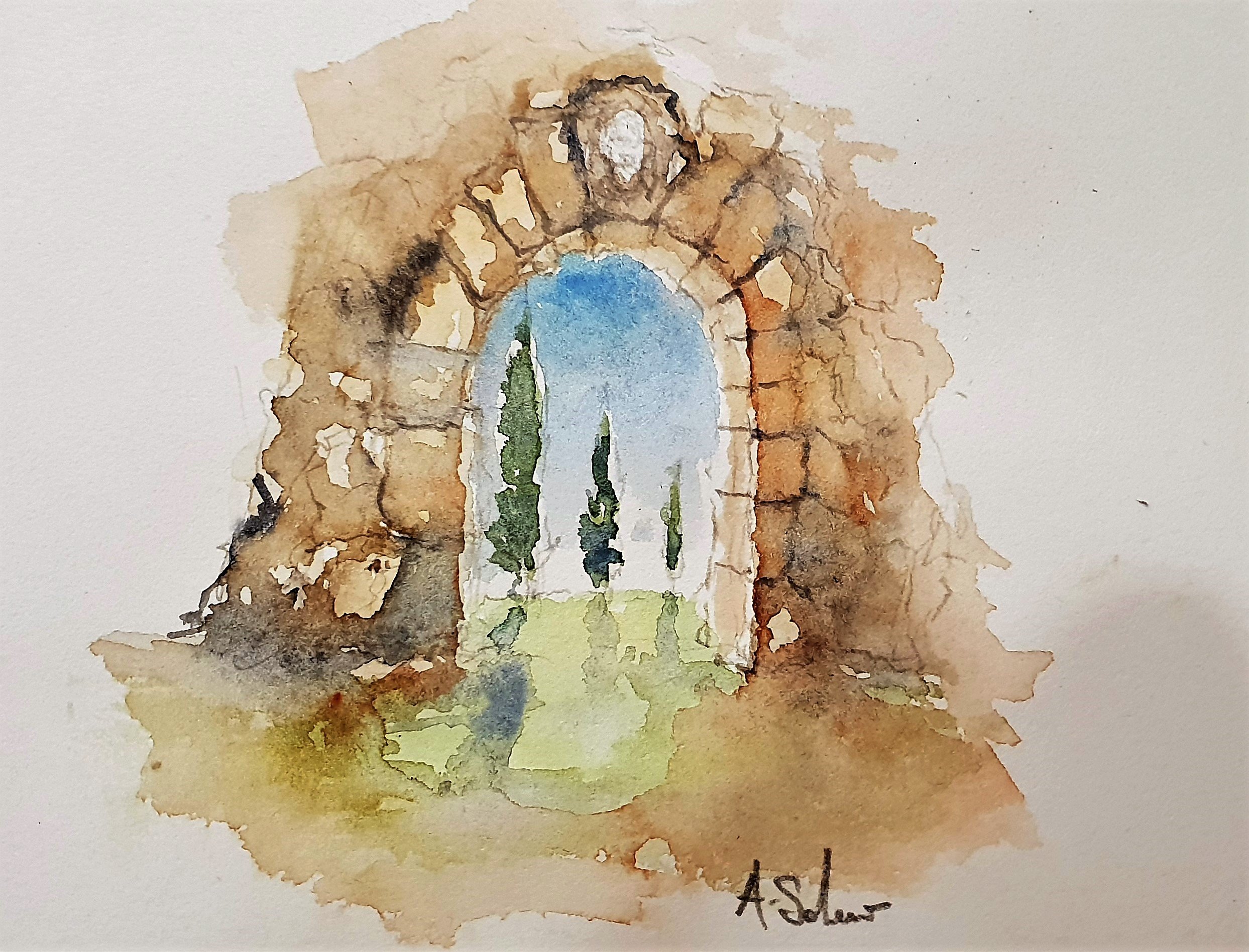
Ancient arc
antico arco

2 0 1 8
watercolor

Necessiteranno alcune migliaia di anni per avere le prime edificazioni con archi a tutto sesto.
Affronterò l'argomento in un prossimo post, intanto all'inizio del post ho condiviso un mio personalissimo acquarello che mostra la realizzazione pittorica di una volta con arco a tutto sesto.
Un abbraccio da Armando

They will need some thousands of years to have the first buildings with round arches.
I will address the topic in a next post, while I share a very personal watercolor that shows the pictorial realization of a vault with a round arch.
A hug from Armando

sistemi di costruzione: il sistema trilitico

construction systems: the trilithic system

Cercherò di intraprendere un piccolo viaggio nella genesi ed evoluzione dei sistemi di costruzione inventati, modificati e usati dall'uomo, per edificare opere dalle caratteristiche architettoniche di straordinario interesse storico e culturale.

I Menhir e i Dolmen sono le prime grandi costruzioni apparse sulla Terra ad opera dell'uomo.
Queste enormi strutture composte da singoli o più megaliti (dal greco mégas =grandi e lithos=pietre) rappresentano i più antichi sistemi di costruzione dell'umanità, senza uso di calce o leganti.
I Menhir, (dal bretone, pietra=men lunga=hir) sono degli enormi megaliti eretti e conficcati nel terreno nel periodo Neolitico, tra il 5000 e 1500 a,C..Essi sono distribuiti in diverse zone del mondo, Europa, Asia e Africa, e la presenza più significativa di questi megaliti è in Bretagna e sulle isole britanniche.
Il Menhir concepito, nella sua erezione come elemento simbolico, legato ai riti della fecondità ,al culto del Sole, ed in altri casi alla funzione di tombe.
Alcuni di loro raggiungono i 25 metri di altezza e la loro erezione, considerata essa stessa un principio di ritualità, poteva durare anche mesi.
Anche in Italia abbiamo siti importanti di strutture megalitiche: Puglia, Liguria, Piemonte, Lombardia e soprattutto Sardegna, dove ne sono stati censiti 740 esemplari.
Alcuni di essi hanno scolpito sulla facciata i simboli femminili della fecondità, come le mammelle,esplicito quindi il richiamo alla Dea Madre, altri sono scolpiti come dei simboli fallici, quasi a testimoniare una volontà di rendere fertile il terreno.fonte1
In Puglia, nel Salento abbiamo una cristianizzazione dei Menhir, avvenuta nel medioevo, con le incisioni di croci e immagini sacre sulle facciate di pietra.


Dalla sua planimetria particolare in cerchi talvolta concentrici, deriva il nome in lingua bretone pietra ricurva, è un luogo magico e rituale carico di significati e misteri, ed ancora oggi è oggetto di dibattiti e studi sulla reale funzione attribuita a questi luoghi, se fossero dei luoghi a carattere sacro e destinati a cerimoniali, osservatori o tombe monumentali.
Il Cromlech di Stonehenge in Inghilterra, vicino Salisbury, è tra i più conosciuti al mondo ed è formato da due corone circolari di triliti, la seconda interna eretta in periodo più recente.fonte-2-
Interessante sottolineare che i megaliti di Stonehenge costituiti da pietre di minerali diversi tra loro: arenaria verde, silicea, dolorite e riolite, come la loro provenienza è spesso distante decine di chilometri dal sito monumentale, addirittura alcuni elementi provengono da una regione del Galles a 200 chilometri di distanza.
Stonehenge, che significa pietra sospesa, in riferimento all'architrave sospeso tra i due piedritti o pilastri, dovrebbe risalire secondo la datazione radiocarbonica al 3100 a.C.
Il sito Neolitico è entrato nel Patrimonio mondiale dell'UNESCO nel 1986 ed è oggetto di pellegrinaggi da ogni parte del mondo.
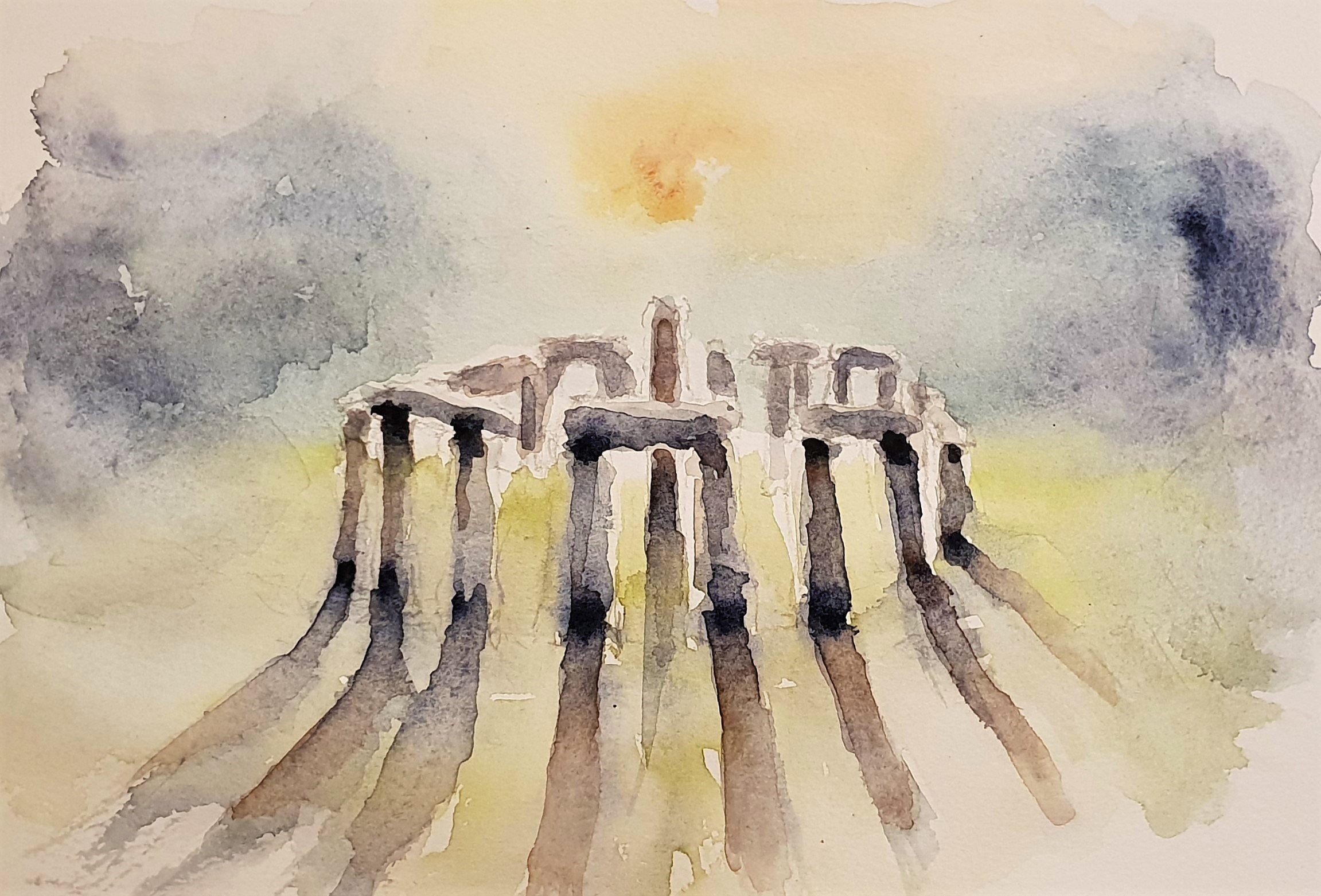
alba sul Cromlech
down on the Cromlech

2 0 1 8
watercolor

I share my modest contribution to images and texts with which I deepen the theme that we discussed in the @discovery-it magazine on the cult of the dead and from which I took inspiration to depict and describe the charm of the oldest and most mysterious monumental sites built by man.
I will try to embark on a little journey into the genesis and evolution of construction systems invented, modified and used by man, to build works with architectural characteristics of extraordinary historical and cultural interest.
These huge structures made up of single or more megaliths (from the Greek mégas= big and lithos =stones) represent the most ancient systems of construction of humanity, without the use of lime or binders.
The Menhir conceived, in its erection as a symbolic element, linked to the rites of fertility, to the cult of the Sun, and in other cases to the function of tombs.
Some of them reach 25 meters in height and their erection, considered itself a principle of rituality, could last even months.
Also in Italy we have important sites of megalithic structures: Puglia, Liguria, Piedmont, Lombardy and especially Sardinia, where 740 specimens have been registered.
Some of them have carved the feminine symbols of fertility on the façade, such as the breasts, thus explicitly referring to the Mother Goddess, others are carved like phallic symbols, as if to testify a willingness to make the soil fertile .
In Puglia, in Salento we have a christianization of the Menhir, which occurred in the Middle Ages, with the incisions of crosses and sacred images on the stone facades.
The Cromlech, the oldest and most complex construction system in history, consisting of Menhir and Dolmen assembled on circular perimeters, often surrounded by ditches.
From its particular planimetry in sometimes concentric circles, derives the name in Breton language curved stone, it is a magical and ritual place full of meanings and mysteries, and still today is the subject of debates and studies on the real function attributed to these places, if they were places of a sacred nature and destined for ceremonials, observatories or monumental tombs.
The Cromlech of Stonehenge in England, near Salisbury, is among the best known in the world and is formed by two circular crowns of triliths, the second internal erected in more recent period.
The Cromlech of Stonehenge in England, near Salisbury, is among the best known in the world and is formed by two circular crowns of triliths, the second internal erected in more recent period.
It is interesting to note that the megaliths of Stonehenge consist of stones of different minerals: green sandstone, silica, dolorite and rhyolite, as their origin is often tens of kilometers away from the monumental site, even some elements come from a region of Wales to 200 miles away.
Stonehenge, which means suspended stone, referring to the architrave suspended between the two piers or pillars, should date back according to the radiocarbon dating to 3100 BC.
The Neolithic site entered the UNESCO World Heritage Site in 1986 and is the subject of pilgrimages from all over the world.
fonti
fonte -1-
fonte-2-
fonte1
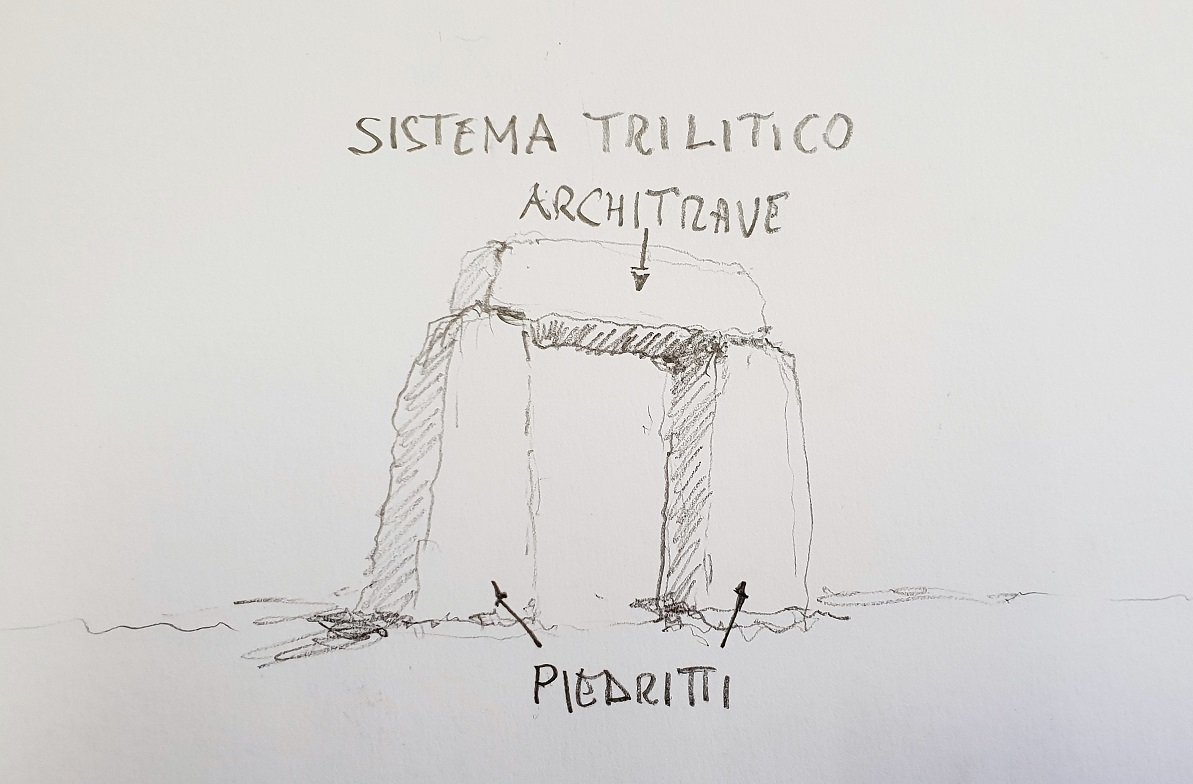
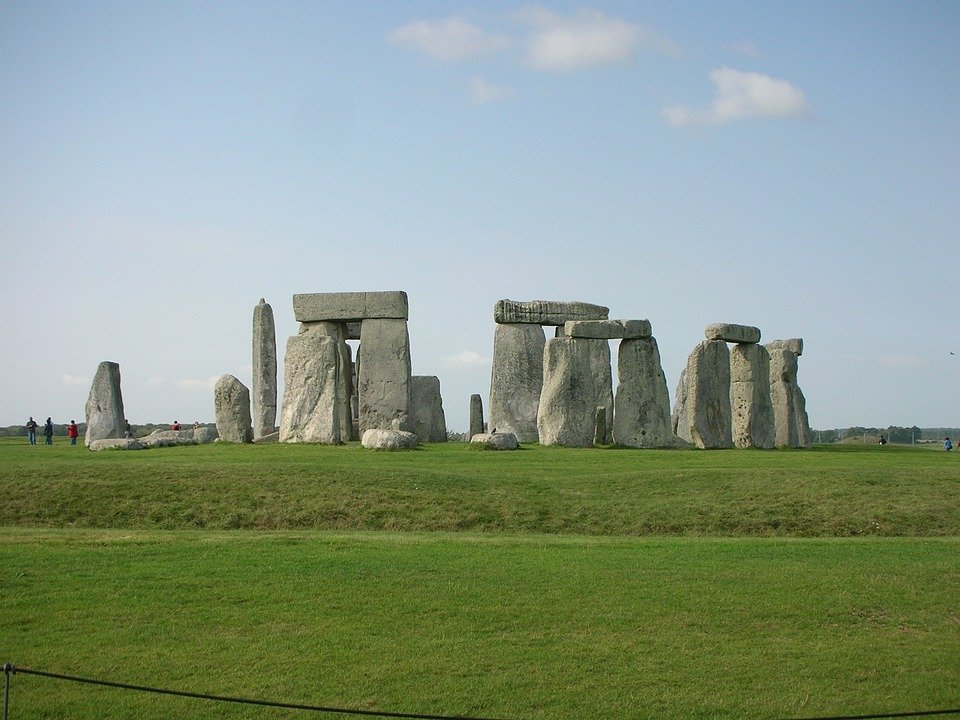
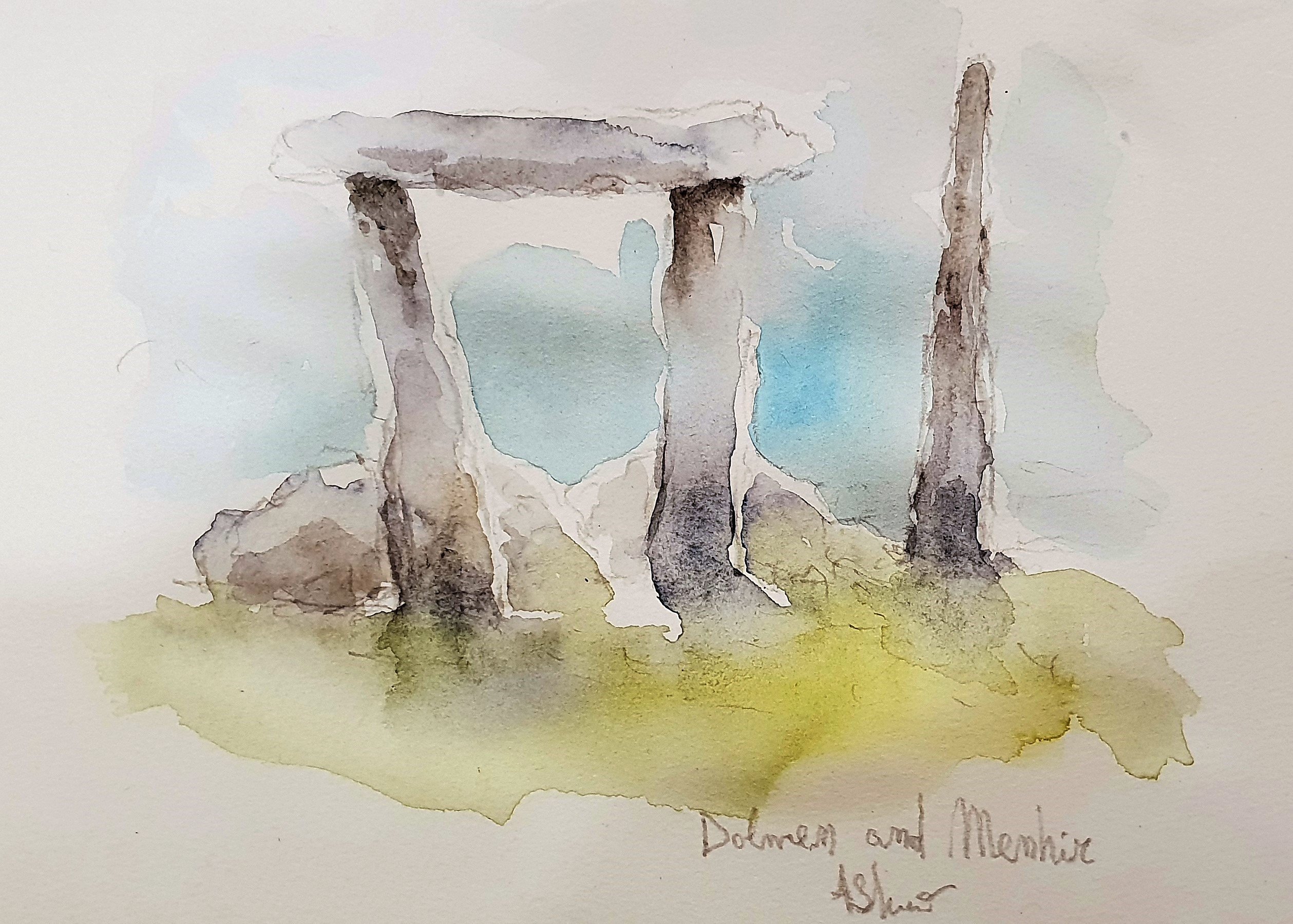
watercolo of megaliths




discovery-it
@discovery-it

Vieni a trovarci sulla prima rivista dedicata al mondo dell'arte&storia




